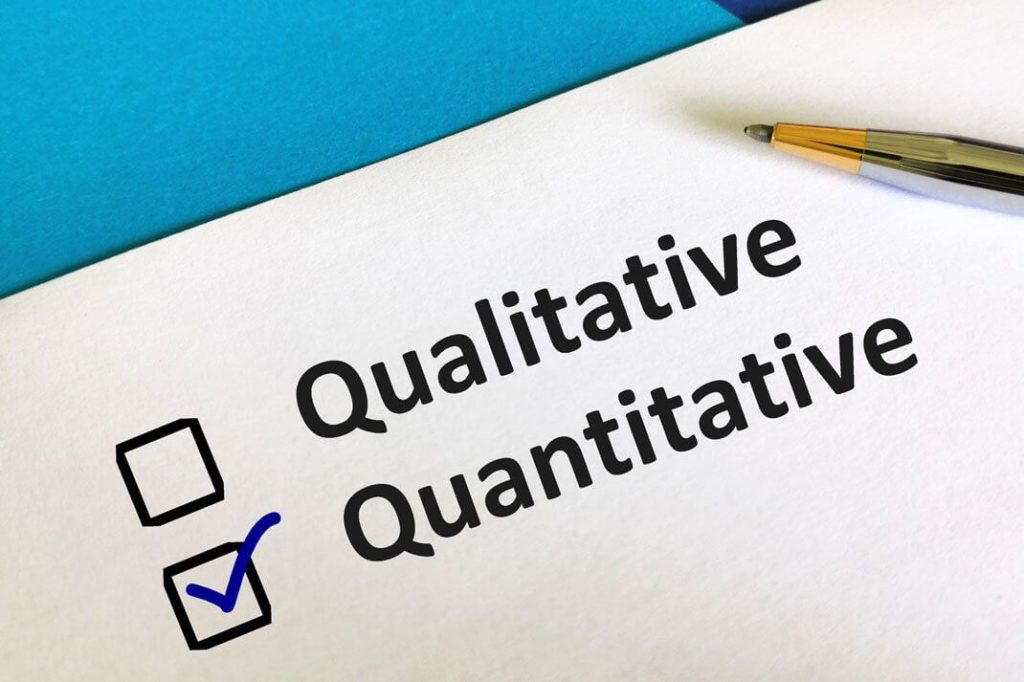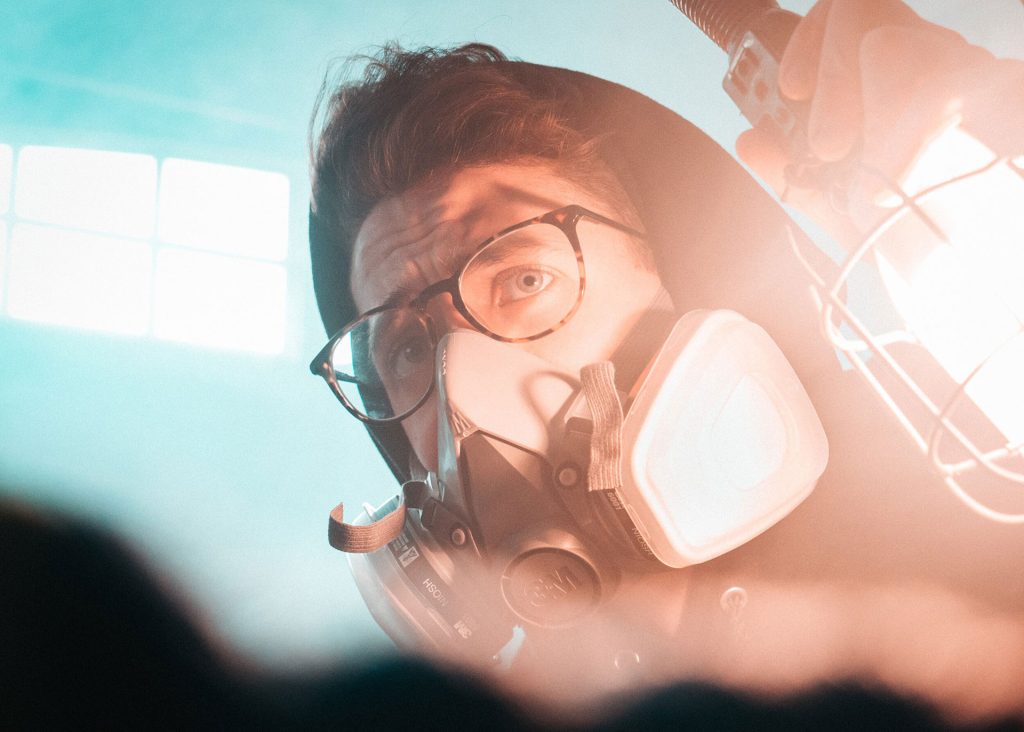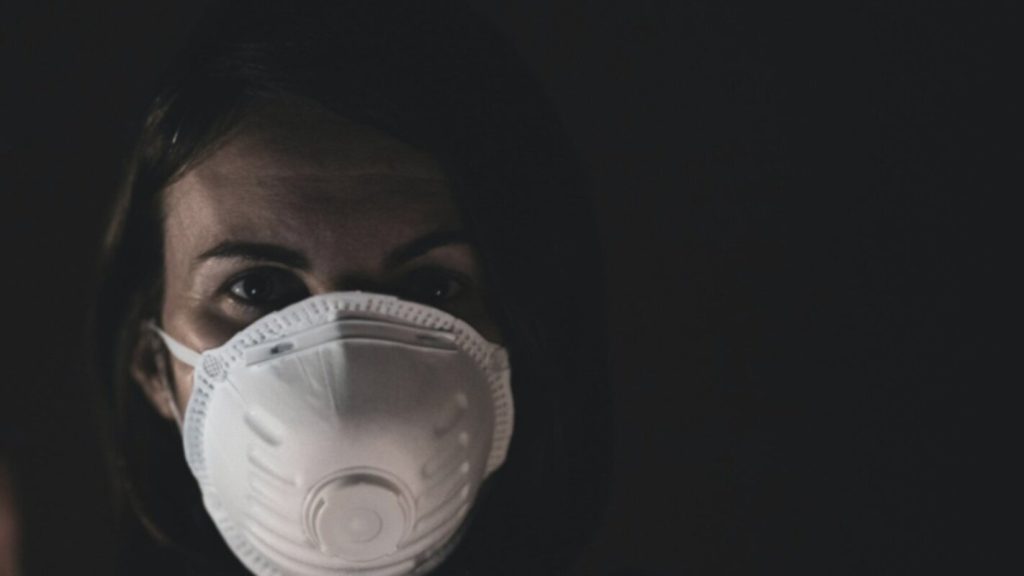OSHA requires that any employer who has employees who must complete job tasks which exposes them to airborne contaminants above the permissible exposure level, must use respiratory protection. Vest has developed a comprehensive guide to qualitative fit testing but we can’t forget that quantitative fit testing or QNFT is a great option for fit testing workers. Quantitative fit testing is a specific type of fit testing which provides a numerical assessment of an employee’s ability to wear the respirator based on particle leakage into the facepiece. In addition to this article on QNFT, you can find more detailed information about general fit testing requirements here.
What is quantitative fit testing or QNFT?
OSHA defines quantitative fit testing as an assessment of the adequacy of respirator fit by numerically measuring the amount of leakage into the respirator.
Quantitative fit testing is the most objective method for determining if the respiratory protection being implemented provides an adequate seal on the user’s face. The QNFT method requires calibrated equipment that tests the quantity of contaminant particles in the breathing zone.
There are three main types of quantitative fit testing methods accepted by OSHA.
- Ambient Aerosol Condensation Nuclei Counter (CNC)
- Controlled Negative Pressure (CNP)
- Generated Aerosol Quantitative
The most common testing process for quantitative fit testing uses the Ambient Aerosol Condensation Nuclei Counter protocol and PortaCount® equipment. This equipment is very versatile and can accommodate multiples modes and respiratory protection types.
When is quantitative fit testing required?
Quantitative fit tests are required for negative pressure air purifying respirators when the levels of the hazardous contaminant are more than ten (10) times the Permissible Exposure Limit. Therefore, when the required fit factor is greater than 100 for tight fitting half facepieces or equal to or greater than 500 for tight fitting full facepieces, a QNFT is required.
If a supplied-air respirator (SAR) or self-contained breathing apparatus (SCBA) is used in demand mode. This is an uncommon practice and is different from continuous flow or pressure-demand mode but does occur in certain situations, specifically escape.
If facepieces are used in SCBAs for structural firefighting. This comes from Chapter 15 of the National Fire Protection Association (NFPA) 1500 standard. More information about respiratory protection for public sector workers.
What are some of the terms used when talking about quantitative fit testing?
QNFT terminology is very similar to qualitative fit testing. You can find some of the basic terms here. Below, is further explanation on the more important terminology for QNFT.
Assigned Protection Factor (APF)
As the APF is an estimate of how much protection a respirator, when used perfectly each time, will provide to the wearer, it must be identified for the type of respirator to determine if a QNFT will be required.
Fit Factor
A quantitative measurement of the fit of a particular respirator to a specific individual. This is a number, calculated by an instrument which is designed to test the number of contaminants inside of a respirator when worn.
Fit factor is the main determinant factor in the evaluation of an employee’s ability to wear a respirator using the QNFT protocol. This is a numerical result provided by the fit testing equipment. If the wearer cannot achieve the required fit factor, the respirator does not adequately fit the worker and another may need to be selected.
Are there any prerequisites for participating in a quantitative fit test?
As with qualitative fit testing, every employee who participates in quantitative fit testing must have completed a Medical Evaluation Questionnaire (MEQ) prior to the fit test to ensure that they are medically able to wear a respirator.
Are there limitations on the types of respirators for which I can use quantitative fit testing?
Quantitative fit testing protocols can be used to fit test all types of respiratory protection currently available.
While QNFT protocols may be used for any type of respirator, QNFT are considered a destructive fit testing method for reusable N95 respirators. The QNFT method requires a puncture of the filtering facepiece in order to place the hose and test leakage inside of the respirator. This means that in times of short supply, QNFT may not be an appropriate protocol as the respirator is unusable once the fit test is completed.
- A large hospital system traditionally used the CNC QNFT protocol and TSI Portacount equipment for ensuring a proper fit for employees. However, during the COVID19 pandemic, it was abundantly clear that completing a fit test which destroyed the respirator was an unacceptable practice. As global supply chain shortages continued, specifically with disposable filtering facepieces (N95), hospital systems and other industries alike chose to switch to a QLFT protocol to preserve their supply of disposable respirators.
What type of equipment will I need to conduct a quantitative fit test?
In order to conduct a quantitative fit test, you must have specific equipment designed for quantitatively fit testing employees. There are two main manufacturers of QNFT equipment currently available.
- TSI Portacount*
- Uses the CNC QNFT Protocol
- OHD Quantifit*
- Uses the CNP QNFT Protocol
*Vest does not endorse any of these manufacturer’s products. This is provided for information purposes only.
The equipment listed above ensures that the employer meets the fit testing protocols by providing instructions through their website and equipment manuals to assist the fit tester.
Where can I find step by step instructions on how to perform a quantitative fit test?
The required minimum fit testing procedures for quantitative fit testing protocols can be found on the OSHA website here.
The manufacturers of the PortaCount and Quantifit devices have developed training videos for their users. You can find information on this equipment below.
- PortaCount – https://www.youtube.com/watch?v=ZnQqadRoCCE
- Quantifit – https://www.youtube.com/watch?v=m5sRn5UpNCs
Do I have to have a certification to conduct quantitative fit testing in house for my employees?
As with QLFT, there are no explicit requirements for the training of employees who provide fit testing services in-house. However, the person providing the fit test must be competent in the QNFT protocols and how to accurately utilize the necessary equipment.
In addition, the Program Administrator must be qualified by appropriate training or experience that is commensurate with the complexity of the program to administer or oversee the respiratory protection program and conduct the required evaluations of program effectiveness.
What if an employee fails a fit test using the quantitative method?
The reasons why a worker may fail a quantitative fit test are the same for a QLFT. As a refresher, here are a few reasons:
- An incorrect size of respirator was selected
- The respirator brand or model does not fit the persons face
- The employee had facial hair or other facial features which interfere with the seal of the respirator
- The respirator is damaged
- The employee did not follow the instructions during the fit test
- The fit tester performed an error during the test or did not follow the correct QNFT protocol
It is very important to remember that one of the main reasons why an employee may fail a fit test is because the respirator does not adequately fit the persons face. As OSHA requires that the employer selects and provides “a sufficient number of respirator models and sizes”, the first step would be to recheck the size to ensure it is appropriate for the employee’s face or offer an alternative respirator to be tested.
If an employee fails a fit test, it should not immediately disqualify them from wearing a respirator, but extra steps must be taken to ensure that the selected respirator protects the workers from the hazardous contaminants to which they are exposed. If an employee fails the QNFT, before conducting a QLFT, evaluate the requirements above to ensure that a QLFT would be appropriate for that type of respirator and the specific exposure.
What are the requirements for recordkeeping for quantitative fit tests?
The requirements for recordkeeping for QNFT include a fit test record for each employee with the following items:
- The name or identification of the employee tested
- Type of fit test performed
- Specific make, model, style, and size of respirator tested
- Date of test
- The results for the quantitative fit test including the fit factor and strip chart recording
All fit test records must be maintained at least until the next fit test is administered which should be, at a minimum, within twelve (12) months of the previous fit test.
In addition to the documentation of the current respiratory protection program, the employer should also maintain documentation of the equipment calibration.
What are some of the concerns with using the quantitative fit testing method?
QNFT’s are very reliable but the equipment can be cost prohibitive for employers to acquire and maintain. The equipment also must be regularly calibrated to ensure accuracy.
- It is important to note that there is a large rental market for this equipment. If there is a need to perform QNFT, the equipment can be rented for a short duration to limit associated cost.
- It is also possible to hire an external vendor to visit your facility to perform multiple fit tests at once to minimize overall cost.
As with QLFT, the accuracy of the fit test result is dependent upon the fit testers ability to use and operate the equipment. Manufacturers of this equipment provide very detailed operating instructions available through their websites, on YouTube, and directions provided with the equipment.
Many employers require their employees to utilize respiratory protection. The selection of the quantitative fit testing protocol provides many benefits such as ensuring an accurate reading and reduction in time spent performing the tests. As with QLFT, QNFT are required at least annually to ensure that employees are protected from the hazards to which they are exposed. QNFT’s also require the employee to complete the Medical Evaluation Questionnaire (MEQ) and Vest can assist your business with easily meeting this requirement using our online respirator clearance system. Speak with a Vest representative about respirator clearance.



